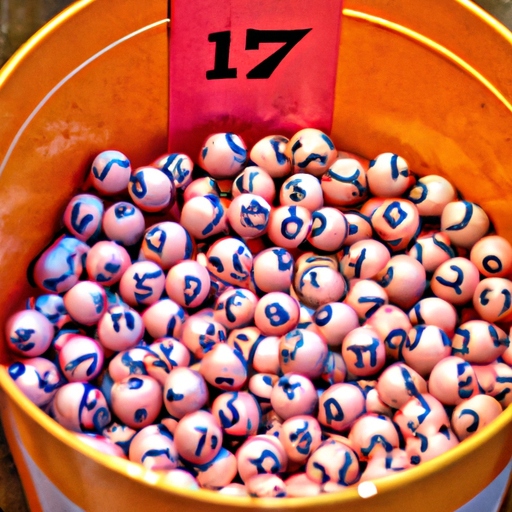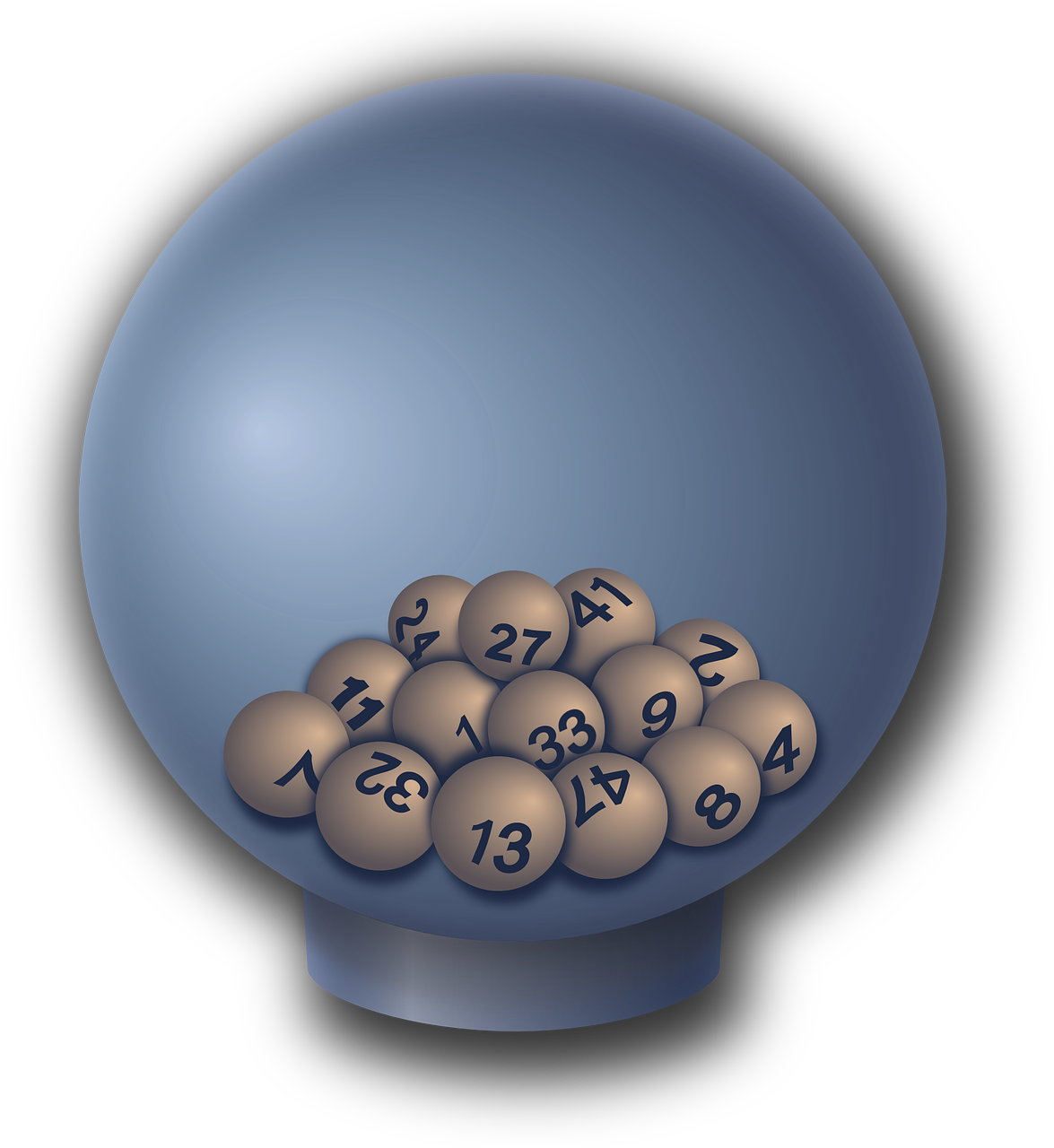You’re about to uncover the intriguing process behind generating lottery numbers. Have you ever wondered how those winning combinations are determined? In this article, you’ll gain insight into the fascinating techniques employed to generate lottery numbers and discover the immense effort undertaken to ensure fairness and randomness in this popular game of chance. From computer algorithms to physical randomness, prepare to be amazed by the intricate systems at play that ultimately determine whether luck will find its way to your doorstep.
Introduction
Overview of lottery number generation
lottery number generation is the process of randomly selecting numbers to determine the winning combination in a lottery draw. The generation of lottery numbers is a vital component of the lottery system, ensuring fairness and integrity in the outcome. This process eliminates any form of bias, allowing everyone an equal chance of winning.
Purpose of generating lottery numbers
The primary purpose of generating lottery numbers is to create a random and unbiased selection that determines the winners of a lottery draw. The use of various methods and techniques ensures that the numbers chosen are not influenced by any external factors and are purely based on chance. This fairness is essential to maintain the credibility and trust of the lottery system.
Random Number Generators (RNGs)
Explanation of Random Number Generators
Random Number Generators (RNGs) are algorithms or physical equipment used to generate a sequence of numbers with no discernible pattern or predictability. These generators produce numbers that are statistically independent and uniformly distributed, simulating true randomness. RNGs play a crucial role in generating lottery numbers, providing an equal opportunity for any number combination to be chosen.
Types of Random Number Generators
There are two main types of RNGs: hardware-based and software-based generators. Hardware-based RNGs use physical processes, such as atmospheric noise, radioactive decay, or electronic noise, to generate random numbers. Software-based RNGs rely on mathematical algorithms to produce random numbers. Both types are extensively used in lottery systems, providing different approaches to achieving randomness.
Use of RNGs in lottery systems
In lottery systems, RNGs are employed to generate the numbers that determine the winning combinations. These generators ensure a fair selection process by eliminating any human influence or bias. By using RNGs, lottery organizers can guarantee that all participants have an equal chance of winning, as the numbers generated are not influenced by external factors.
Physical Random Number Generation
Traditional methods of drawing lottery numbers
Before the widespread adoption of technology, lottery draws were conducted using physical random number generation methods. These traditional methods involved various techniques to ensure a random selection. Examples include drawing numbered balls from a container or spinning a lottery drum to mix and select the winning numbers. These physical processes allowed for a tangible and visible way to generate numbers.
Mechanical devices used for lottery draws
To ensure a fair and unbiased selection, lottery draws often utilized mechanical devices. These devices acted as randomizers, providing an unpredictable outcome. Examples of mechanical lottery machines include air-mix machines that mix numbered balls, gravity-pick machines that rely on gravity to select balls, and blow machines that use forced air to mix the balls before selecting them. These devices add an element of excitement and intrigue to the lottery draw.
Security measures to ensure fairness
To maintain the integrity and fairness of physical random number generation, stringent security measures are in place. Independent auditors and witnesses oversee the entire process, ensuring transparency and preventing any tampering or manipulation. Video surveillance and detailed documentation are often employed to create an accurate record of the draw. These measures provide participants with confidence in the fairness of the lottery system.
Pseudorandom Number Generation
Algorithm-based methods for generating random numbers
Pseudorandom Number Generation (PRNG) is a method of generating random numbers using algorithms. Unlike true RNGs, PRNGs rely on an initial value called the “seed,” which determines the entire sequence of random numbers. These algorithms use mathematical formulas to calculate a series of seemingly random numbers. While PRNGs produce numbers that mimic randomness, they are technically deterministic.
Seed values and their role in pseudorandom number generation
Seed values are crucial in the PRNG process, as they determine the starting point for generating random numbers. Changing the seed value generates a different sequence of numbers. However, if the same seed value is used, the sequence remains the same. The choice of seed value is critical to ensuring randomness, as a predictable or easily guessable seed may compromise the integrity of the generated numbers.
Challenges and limitations of pseudorandom number generation
Despite their widespread use, PRNGs have some limitations and challenges. One significant challenge is the predictability of the sequence once the seed value is known. If an attacker can determine or guess the seed value, they can predict the numbers generated. Another limitation is the potential for periodicity within the sequence of numbers generated, resulting in non-random patterns. Continuous monitoring and regular reseeding of PRNGs are required to mitigate these risks.
Statistical Approaches
Statistical methods used in lottery number generation
statistical approaches play a significant role in lottery number generation. These methods analyze past draw results and patterns to identify frequencies and probabilities. Through the study of historical data, statistical models are developed to estimate the likelihood of specific number combinations being selected. This approach aims to strike a balance between incorporating statistical analysis and maintaining a genuinely random selection process.
Analysis of past results and patterns
An essential aspect of statistical approaches is the analysis of past draw results and patterns. By examining previous draws, lottery organizers can identify any patterns or biases that may exist. This analysis can help in making informed decisions about which numbers to include or exclude in future draws. However, it is important to note that while past results can offer insights, lottery draws are independent events, and past occurrences do not guarantee future outcomes.
Balancing frequencies and probabilities
Statistical approaches focus on striking a balance between frequencies and probabilities. Some numbers may appear more frequently than others in past draws, but this does not necessarily indicate that they will be more likely to appear in future draws. Balancing frequencies and probabilities ensures that each number has an equal chance of being selected, regardless of historical occurrences. This balance is essential in maintaining fairness and randomness in lottery number generation.
Number Balls and Lottery Machines
Use of number balls in lottery draws
Number balls are commonly used in lottery draws to represent different number combinations. These balls are typically made of materials such as plastic or rubber and are marked with numbers. Each ball has an equal chance of being selected, ensuring a fair probability distribution. The use of number balls creates a tangible and visually appealing experience for participants.
Design and construction of lottery machines
Lottery machines are specially designed to facilitate the random selection of number balls. These machines incorporate mechanisms that ensure a truly random and unbiased outcome. The design of lottery machines varies, but they usually consist of chambers or drums where the number balls are placed. The machines use different techniques, such as rotation, mixing, or blowing, to ensure thorough randomization before selecting the winning numbers.
Randomization techniques with number balls
To achieve randomization and prevent any predictable patterns, various techniques are employed with number balls. Lottery machines may rotate the balls, move them with forced air, or use a gravity-based system to mix them thoroughly. These randomization techniques eliminate any biases and increase the unpredictability of the selection process. They contribute to the excitement and suspense of lottery draws.
Computerized Systems
Transition from physical to computerized lottery systems
Advancements in technology have led to the transition from physical lottery systems to computerized ones. Computerized systems offer increased efficiency, accuracy, and security in generating lottery numbers. Software programs specifically designed for lottery draws use complex algorithms and protocols to ensure randomness and fairness in number generation. This transition has revolutionized the lottery industry, allowing for more streamlined and reliable processes.
Role of software in generating lottery numbers
In computerized systems, software takes on the role of generating lottery numbers. These software programs utilize algorithms that simulate randomness and generate number combinations based on predetermined rules. The algorithms undergo rigorous testing and evaluation to ensure their integrity and adherence to established standards. The software’s ability to generate vast numbers of combinations within milliseconds enables quick and efficient lottery draws.
Secure algorithms and protocols
Computerized systems employ secure algorithms and protocols to guarantee the integrity and fairness of lottery number generation. These algorithms are designed to prevent any manipulation or tampering with the generated numbers. Cryptographic techniques, secure channels, and audit trails are employed to ensure the confidentiality, integrity, and non-repudiation of the generated numbers. Regular audits and certifications enhance the credibility of computerized lottery systems.
Human Involvement
Overview of human involvement in lottery number generation
While technology plays a significant role in generating lottery numbers, human involvement is also crucial. Lottery operators, auditors, and witnesses are responsible for overseeing the entire process to ensure fairness and transparency. Human involvement acts as a checks-and-balances mechanism, preventing any potential biases or errors in the number generation process. It adds an extra layer of accountability and instills trust in the lottery system.
Role of auditors and witnesses in the process
Auditors and witnesses play a vital role in maintaining the integrity of the lottery number generation process. These individuals observe and document every step of the draw, including the randomization techniques, the selection of number balls, or the operation of computerized systems. Their presence ensures that the process remains unbiased, transparent, and compliant with regulatory requirements. Auditors and witnesses provide independent verification and act as a safeguard against potential fraud or misconduct.
Ensuring transparency and integrity
Human involvement in lottery number generation ensures transparency and integrity in the entire process. By having auditors and witnesses present, lottery organizers establish trust and confidence among participants. Openly documenting the procedures, allowing public observation, and providing detailed reports enhance transparency. This ensures that the lottery system operates in a fair and accountable manner, promoting public trust and satisfaction.
Third-Party Testing and Verification
Independent testing of lottery number generation
Third-party testing and verification play a critical role in confirming the fairness and integrity of lottery number generation. Independent organizations, often accredited laboratories or specialized firms, test and evaluate the processes and systems used by lottery operators. These tests verify the randomness, security, and compliance of the number generation methods. By having external parties conduct thorough assessments, lottery operators can demonstrate their commitment to honest practices and gain the trust of participants.
Certifications and audits for fairness
Certifications and audits further ensure the fairness of lottery number generation. Independent bodies assess the entire lottery system, including the number generation process. Rigorous evaluations are conducted to ensure adherence to internationally recognized standards and regulations. Upon successfully meeting the requirements, certification is awarded, providing evidence of a fair and transparent lottery system. Regular audits are also performed to evaluate ongoing compliance and identify any areas for improvement.
Regulatory bodies and standards
Regulatory bodies and standards play a crucial role in overseeing the fairness and legality of lottery number generation. These organizations establish guidelines and regulations that lottery operators must comply with. By setting industry standards and conducting inspections, regulatory bodies ensure that the generated lottery numbers are unbiased and the entire process adheres to ethical and legal standards. The presence of these regulatory bodies gives participants confidence in the lottery system’s integrity.
Conclusion
Summary of lottery number generation methods
Lottery number generation involves various methods and techniques to ensure fairness and randomness in selecting the winning combination. Random Number Generators (RNGs), both physical and software-based, play a crucial role in generating random numbers without any predictable pattern. Statistical approaches provide a balance between analyzing past results and maintaining truly random outcomes. The use of number balls and lottery machines adds a tactile and visually appealing aspect to lottery draws. Computerized systems provide increased efficiency, accuracy, and security. Human involvement, third-party testing, and regulatory bodies ensure transparency, accountability, and fairness in lottery number generation.
Emphasizing fair and unbiased processes
The generation of lottery numbers is designed to be fair and unbiased. Through the use of various methods and technologies, the aim is to create a level playing field where every participant has an equal chance of winning. Implementing robust processes and security measures eliminates any potential for manipulation or tampering, ensuring the integrity of the lottery system. By emphasizing fair and unbiased processes, lottery organizers uphold the trust and confidence of participants.
Continuous improvement in lottery systems
Lottery systems are continuously evolving and improving to enhance the generation of lottery numbers. Advancements in technology enable more secure and efficient processes. Analysis of past results and patterns allows for better statistical methodologies. Ongoing audits and certifications ensure compliance with standards and regulations. By consistently seeking improvements, lottery systems can remain transparent, fair, and responsive to the needs and expectations of participants.



